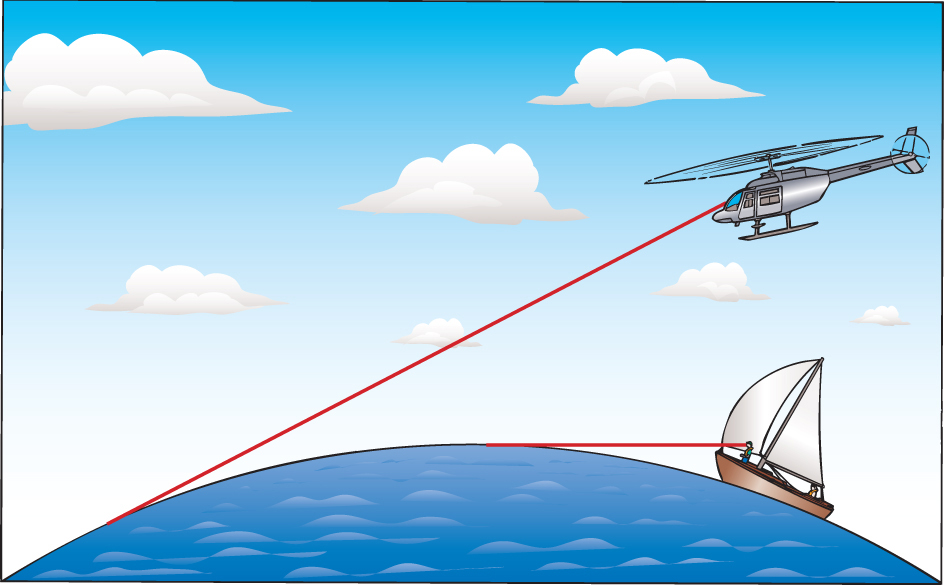Horizon is the distant, curved line where the earth and sky seem to meet. Most people near the ground on land cannot see to the horizon because buildings, trees, or mountains block their view. But a person on-board a ship can see all the way to the horizon on a clear day.

The horizon seems nearer to a person standing at sea level than to a person in an airplane or on a mountain peak. This is because the person up high can see farther over the curvature of the earth than the person at sea level. The horizon is about 21/2 miles (4 kilometers) away to someone at sea level. But it is 98 miles (158 kilometers) from someone in an airplane or on a mountain 1 mile (1.6 kilometers) above sea level.
Astronomers and navigators have several technical meanings for horizon. The visible horizon is the imaginary line where the earth and sky seem to meet. The astronomical, or sensible, horizon refers to the imaginary line where the celestial sphere (curved dome of the sky) meets the imaginary level plane through a person’s eye. Because the earth is curved, the visible horizon is slightly below the astronomical horizon. The angle between an observer and the two horizons is called the dip.
